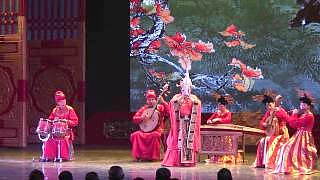Introduction:
Chili oil is a versatile and flavorful condiment widely used in Chinese cuisine, particularly in SiChuan and HuNan dishes. It adds heat, depth and aroma to a variety of dishes, from noodles and stir-fries to dumplings and marinades. Making chili oil at home allows you to customize the flavors and heat level to your preference, and it's surprisingly simple to prepare, with just a few key ingredients.
Ingredients:
- A neutral Oil: Choose a neutral oil with a high smoke point, such as canola oil, grape-seed oil, or peanut oil. This will serve as the base for the chili oil and carry the flavors of the aromatics and spices.
- Dried Chilies: Use dried chili peppers of your choice, such as Chinese facing-heaven chilies, Thai bird's eye chilies, or arbol chilies; but any will be fine. Adjust the quantity based on your preferred level of heat. If whole dried chilies, crumble into flakes. Some sliced fresh chilis can also be included.
- Sichuan Peppercorns: Optional but highly recommended for authentic Sichuan flavor. Sichuan peppercorns add a citrusy, floral aroma and a distinctive numbing sensation to the chili oil. Can be bought at a Chinese grocery store or online.
- Aromatics: Garlic, ginger, and scallions are common aromatics used in chili oil. They add depth and complexity to the flavor profile.
- Spices: Optional spices such as star anise and cloves can be added for additional flavor and complexity.
- Salt: A pinch of salt enhances the overall flavor of the chili oil.
Method:
- Prepare the Ingredients: If using whole dried chilies, remove the stems and cut or tear them into smaller pieces. Peel and slice the garlic and ginger. Cut the scallions into small pieces.
- Infuse the oil: In a saucepan or skillet, heat the neutral oil over low to medium heat. Add the dried chilies, Sichuan peppercorns (if using), garlic, ginger, plus any optional spices. Cook gently, stirring occasionally, until the aromatics are fragrant and slightly golden, about 10-15 minutes.
- Cool the oil: Remove the pan from the heat and let the oil cool. This allows the flavors to infuse into the oil.
- Strain the oil: Once the oil has cooled, strain it through a fine-mesh sieve or cheesecloth into a clean container.
- Storage: In an airtight container, store the chili oil in a cool, dark place or in the refrigerator for longer shelf life.
Tips:
- Adjust the quantity of dried chilies and SiChuan peppercorns to your preferred level of heat and numbing sensation.
- Experiment with different aromatics and spices to customize the flavor of your chili oil.
- A little sesame oil can be added at the end to further enhance the flavor and aroma of the chili oil. Toasted sesame oil, in particular, adds a rich, nutty flavor that complements the spices and aromatics.
- Be careful not to overheat the oil, as this can cause the aromatics and spices to burn and develop off-flavors.
Enjoy your homemade chili oil drizzled over noodles, stir-fries, dumplings, or any dish that could use a spicy kick and aromatic depth! Give some to your friends and relatives : )
Chinese cuisine is an intricate tapestry of flavors, techniques, and regional specialties that has evolved over thousands of years. From the fiery spices of Sichuan to the delicate dim sum of Cantonese cuisine, every region of China offers its own culinary delights. For visitors to China, exploring the diverse and dynamic world of Chinese food is an essential part of experiencing the country's rich cultural heritage. Here's a more extensive exploration of Chinese cuisine for visitors:
Regional Diversity:
Sichuan Cuisine: Hailing from the southwestern province of Sichuan, this cuisine is famed for its bold, spicy, and numbing flavors. Sichuan peppercorns, chili peppers, and aromatic spices are used liberally in dishes like Mapo Tofu, Dan Dan Noodles, and Sichuan Hot Pot, creating a symphony of flavors that tingles the taste buds.
Cantonese Cuisine: With its emphasis on fresh ingredients and delicate flavors, Cantonese cuisine is highly regarded for its seafood dishes, roasted meats, and dim sum. Steamed fish, Char Siu (barbecue pork), and Har Gow (shrimp dumplings) are just a few examples of the exquisite dishes that showcase Cantonese culinary mastery.
Shanghai Cuisine: Reflecting its coastal location and cosmopolitan history, Shanghai cuisine combines influences from Jiangsu, Zhejiang, and Anhui provinces. Sweet and Sour Mandarin Fish, Shanghai Soup Dumplings (Xiaolongbao), and Drunken Chicken are some of the signature dishes that highlight the diverse flavors and textures of this culinary tradition.
Beijing Cuisine: As the capital of China, Beijing boasts a rich culinary heritage deeply rooted in imperial traditions. Peking Duck, a dish with crispy skin and succulent meat served with pancakes and hoisin sauce, is a quintessential Beijing delicacy. Other notable dishes include Zhajiangmian (Beijing Noodles), Mongolian Hot Pot, and Beijing-style meat pies.
Hunan Cuisine: Known for its bold and aromatic flavors, Hunan cuisine features dishes that are spicy, sour, and intensely flavorful. Chairman Mao's Red-Braised Pork, Dong'an Chicken, and Steamed Fish Head with Chopped Chili exemplify the fiery and robust nature of Hunanese cooking, which makes ample use of chili peppers, garlic, and fermented ingredients.
Street Food and Snacks:
Jianbing: This savory Chinese crepe is a popular breakfast option, consisting of a thin pancake filled with eggs, scallions, cilantro, and various fillings such as crispy fried dough, pickled vegetables, or chili sauce.
Baozi: These steamed buns are filled with a variety of savory or sweet fillings, including pork, vegetables, or red bean paste. Baozi are a popular street food snack and can be found in teahouses, markets, and street stalls across China.
Roujiamo: Often referred to as Chinese Hamburgers, roujiamo features savory braised meat stuffed inside a flatbread, offering a hearty and flavorful snack that's perfect for on-the-go eating.
Dining Etiquette and Customs:
Family-Style Dining: Chinese meals are typically served family-style, with multiple dishes shared among diners seated around a table. It's customary to use chopsticks to pick up food from communal dishes and to serve elders before oneself.
Toasting and Ganbei: When dining with Chinese hosts, expect toasts (ganbei) with alcohol, usually baijiu (Chinese liquor). It's polite to reciprocate the toast and drink in moderation, but declining politely is acceptable if you don't drink alcohol.
Tea Culture: Tea is an integral part of Chinese dining culture, with a wide variety of teas available to complement different dishes. Green tea, oolong tea, and pu'er tea are among the most popular choices, and serving tea to guests is a sign of hospitality and respect.
Street Markets and Night Markets:
Wangfujing Snack Street, Beijing: Located near the Forbidden City, this bustling street market offers a wide variety of traditional snacks, street food, and local delicacies. Visitors can sample everything from scorpions on a stick to traditional Beijing snacks like Jianbing and Tanghulu (candied fruit skewers).
Shanghai Old Street, Shanghai: Nestled in the heart of the city's historic district, Shanghai Old Street is a bustling marketplace where visitors can explore narrow alleyways lined with traditional shops, street vendors, and food stalls. From steamed dumplings and stinky tofu to hand-pulled noodles and sugar-coated haws, there's something to satisfy every craving.
Dietary Considerations:
Vegetarian and Vegan Options: While Chinese cuisine traditionally features a wide range of meats and animal products, vegetarian and vegan options are becoming increasingly available, especially in larger cities and tourist destinations. Buddhist restaurants (????, s�sh� c?nt?ng) often offer meat-free versions of classic dishes, and plant-based ingredients like tofu, mushrooms, and seasonal vegetables are widely used in Chinese cooking.
Exploring the diverse and delicious world of Chinese cuisine is an essential part of any visit to China. From regional specialties and street food snacks to dining etiquette and cultural customs, the culinary landscape of China offers a rich tapestry of flavors, traditions, and experiences that are sure to delight and inspire visitors from around the world. Bon app�tit!.
 A taste of China at home : Chilli Oil
A taste of China at home : Chilli Oil















